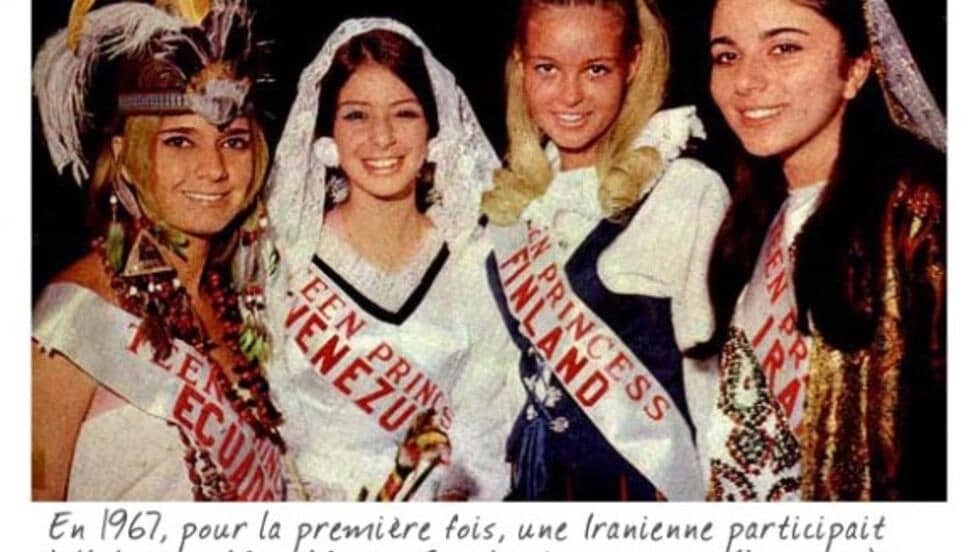The Iranian stars who were purged from history
As is true in Iran, where press and television archives were destroyed following the 1979 revolution, history is written by the winners. Except for a few individuals who look up the scant information they can find, actors, models, and athletes who were once well-known have all but disappeared from memory.

Today, the Internet has made it nearly impossible to remove people from the pages of history. But those who rose to fame half a century ago and whose names only remain on faded pages of Iranian newspapers may be out of luck. After the revolution, newspapers and TV broadcasters were taken over by the state, and their archives were either destroyed or closed. Today, they remain inaccessible to the public at large.
“The government decides what to release and when”
Ali Fatehi is an Iranian film director who lives in Paris. He has researched the stories of Iranian entertainers and athletes who were erased from history, and is planning to make documentaries about several of these people.
In Iran, a golden generation of people who were once stars and for whom Iranians would stand in line in front of theatres and stadiums to see perform have been wiped from history. Poets and writers haven’t disappeared, because they published books and were therefore not dependent on the media, but entertainers are a whole other matter. After the Islamic revolution, most newspaper and broadcast archives were either destroyed or handed over to the government. Compilations of old newspapers or magazines that have been sold to the public since then are heavily censored, with pages or whole editions missing. The government decides what they want to release and when.
Today, we don’t have access to the vast majority of the movies from the 1950s and 1960s. There were quite famous stars like Zari Khoshkam, Farzaneh, Tayeedi and Soraya Beheshti who were on magazine covers before the revolution, but completely disappeared afterwards. The same goes for beauty queens. In the 60s and 70s, a number of Iranian teen beauty queens took part in international pageants, like Elaheh Azodi and Shoreh Nikpour. They were quite famous in their own time, but were erased from history overnight; of course, they did not exactly fit in with sharia law.
 Today, we don’t have access to the vast majority of the movies from the 1950s and 1960s. There were quite famous stars like Zari Khoshkam, Farzaneh, Tayeedi and Soraya Beheshti who were on magazine covers before the revolution, but completely disappeared afterwards. The same goes for beauty queens. In the 60s and 70s, a number of Iranian teen beauty queens took part in international pageants, like Elaheh Azodi and Shoreh Nikpour. They were quite famous in their own time, but were erased from history overnight; of course, they did not exactly fit in with sharia law.
Today, we don’t have access to the vast majority of the movies from the 1950s and 1960s. There were quite famous stars like Zari Khoshkam, Farzaneh, Tayeedi and Soraya Beheshti who were on magazine covers before the revolution, but completely disappeared afterwards. The same goes for beauty queens. In the 60s and 70s, a number of Iranian teen beauty queens took part in international pageants, like Elaheh Azodi and Shoreh Nikpour. They were quite famous in their own time, but were erased from history overnight; of course, they did not exactly fit in with sharia law.
“Sedqinayi was a football star and the coach of Iran’s first national team, but today, Iranian sports journalists don’t even know his name”
Many football legends vanished like this, too. Unlike with actresses or beauty queens, there are no political reasons for this, but the shuttering of archives affected them, too. One of the most striking examples of these forgotten footballers is Hossein Sedqinayi. Born in 1902, he played in clubs in Turkey, Austria, and Belgium, where he scored more goals than any other football player in the country for three years in a row. He returned to Iran in 1941 and became the coach of the first Iranian national football team. In 1972, as the team’s manager, he took Iran to the World Cup. Today, if you ask professional sports journalists in Iran, they don’t even know his name.
Of course, some of these people are not completely traceless, or I wouldn’t have found out about them. But it takes a lot of effort. The only archives available are personal ones. Some individuals scan front covers of their old newspapers and put them online, and there are a few forums and Facebook groups for people who are passionate about the 1950s, say, or who are big film buffs. By doing a lot of Internet research, I have been able to slowly unravel some former stars’ stories, and have even found out that some of those who are still alive now reside abroad. But the amount of information out there remains quite limited.
